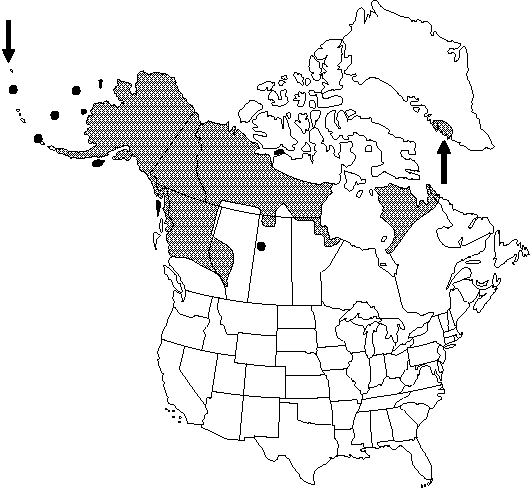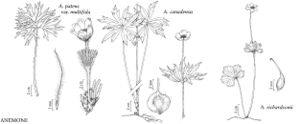Difference between revisions of "Anemone richardsonii"
Fl. Bor.-Amer. 1: 6. 1829.
FNA>Volume Importer |
FNA>Volume Importer |
||
| Line 54: | Line 54: | ||
|publication year=1829 | |publication year=1829 | ||
|special status=Selected by author to be illustrated | |special status=Selected by author to be illustrated | ||
| − | |source xml=https://jpend@bitbucket.org/aafc-mbb/fna-data-curation.git/src/ | + | |source xml=https://jpend@bitbucket.org/aafc-mbb/fna-data-curation.git/src/8f726806613d60c220dc4493de13607dd3150896/coarse_grained_fna_xml/V3/V3_771.xml |
|genus=Anemone | |genus=Anemone | ||
|species=Anemone richardsonii | |species=Anemone richardsonii | ||
Revision as of 17:19, 18 September 2019
Aerial shoots 5-30 cm, from rhizomes, rhizomes horizontal. Basal leaves 1, simple; petiole (0.8-)2-8(-12) cm; leaf blade reniform to ±orbiculate, (1-)1.5-3(-4) × 1.5-4 cm, base somewhat cordate, margins crenate to serrate ±throughout, apex acute to broadly acute, surfaces glabrous or ±villous, or abaxially glabrescent; segments primarily 3, rhombic; lateral segments unlobed or 1×-lobed; ultimate lobes 4-10(-15) mm wide. Inflorescences 1-flowered; peduncle puberulous; involucral bracts 2-3, 1-tiered, simple, ±similar to basal leaves, primarily rhombic, 1-3.5 cm, bases distinct, cuneate, margins crenate on distal 1/2, apex acute to narrowly acute, surfaces glabrous or ±villous, or abaxially glabrescent; segments 3, primarily rhombic; lateral segments unlobed, 2-10 mm wide. Flowers: sepals (4-)6(-8), yellow (rarely abaxially yellow, tinged blue, and adaxially yellow), elliptic, 8-15 × 4-10 mm, abaxially villous, especially proximally, adaxially glabrous; stamens 25-55. Heads of achenes loosely spheric; pedicel 3-20 cm. Achenes: body ovoid to oblong, 3-4 × ca. 1.5 mm, not winged, glabrous; beak recurved, 4-6 mm, glabrous. 2n=14.
Phenology: Flowering spring–summer (May–Aug).
Habitat: Thickets, moist woods, meadows, slopes
Elevation: 20-2200 m
Distribution

Greenland, Alta., B.C., Man., Nfld., N.W.T., Que., Sask., Yukon, Alaska, Asia.
Discussion
Selected References
None.
